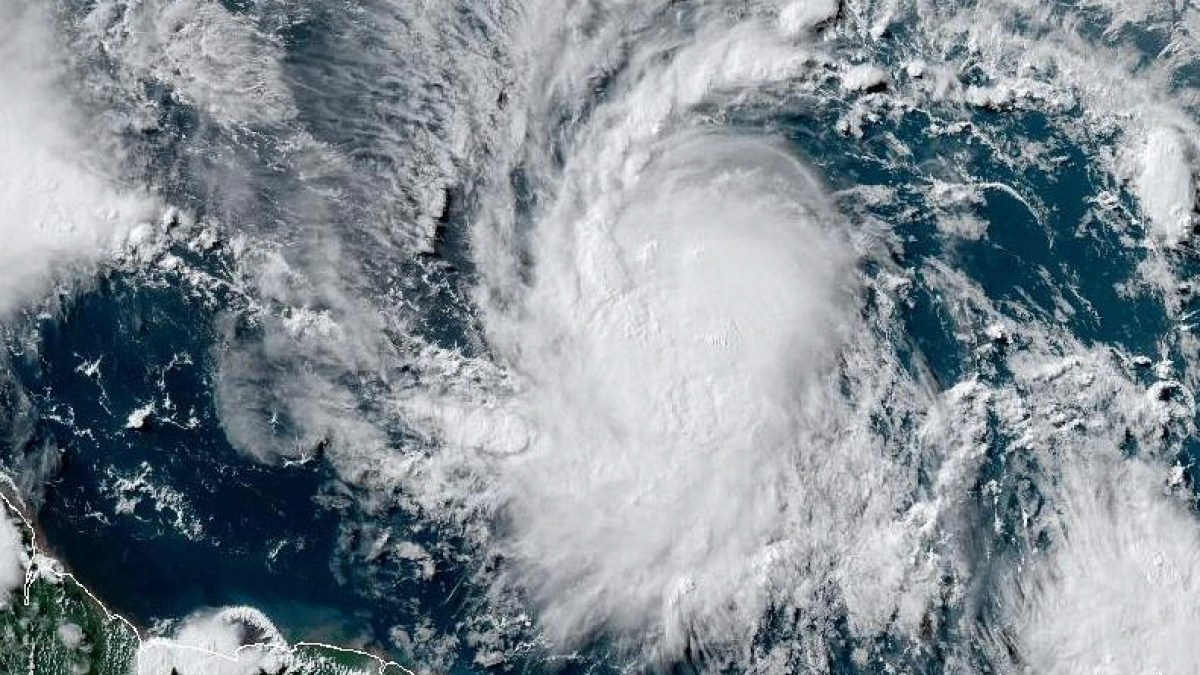Storm begins to shut down southeast Caribbean amid urgent pleas from government officials for people to take shelter.
Much of the southeast Caribbean is on alert as storm Beryl strengthens into the first hurricane of the 2024 Atlantic season, with forecasters warning of an “extremely dangerous” Category 4 storm.
The US National Hurricane Center (NHC) said Beryl – churning on Sunday in the Atlantic Ocean about 565km (350 miles) east of Barbados – was “an extremely dangerous Category 4 hurricane” and to heed local government and emergency management.
The storm’s eye is expected to move early on Monday across the Windward Islands, a cluster of islands including Martinique, Saint Lucia and Grenada, among others, it said.
The storm will produce “potentially catastrophic hurricane-force winds, a life-threatening storm surge, and damaging waves,” the NHC forecast said.
Barbados, Saint Lucia, Saint Vincent and the Grenadines, Grenada and Tobago were all under hurricane warnings, while tropical storm warnings or watches were in effect for Martinique, Dominica and Trinidad, the NHC said in its latest advisory.
Cars were seen lined up at filling stations in the Barbadian capital, Bridgetown, while supermarkets and grocery stores were crowded with shoppers buying food, water and other supplies. Some households were already boarding up their properties.
Saint Vincent and the Grenadines as well as Grenada were at the highest risk of being at the centre of the storm’s core beginning early Monday, the NHC said.
A Category 3 or higher on the Saffir-Simpson scale is considered a major hurricane, and a Category 4 storm packs sustained winds of at least 209km/h (130mph).
Beryl was packing maximum sustained winds that were estimated at 209km/h (130mph), the NHC said around 11:35am (15:35 GMT), as it warned of “heavy rainfall and localized flooding.”
Beryl is expected to remain powerful as it moves across the Caribbean, the NHC said, warning residents and officials in the Dominican Republic, Haiti, Jamaica, the Cayman Islands and the rest of the northwestern Caribbean to carefully monitor its progress.
Such a powerful storm forming this early in the Atlantic hurricane season – which runs from early June to late November – is extremely rare, experts said.
“Only five major [Category 3+] hurricanes have been recorded in the Atlantic before the first week of July. Beryl would be the sixth and earliest this far east in the tropical Atlantic,” NHC meteorologist Michael Lowry posted on X.
The US National Oceanic and Atmospheric Administration (NOAA) said in late May that it expects this year to be an “extraordinary” hurricane season, with up to seven storms of Category 3 or higher.
The agency cited warm Atlantic Ocean temperatures and conditions related to the weather phenomenon La Nina in the Pacific for the expected increase in storms.
Extreme weather events including hurricanes have become more frequent and devastating in recent years as a result of climate change.




